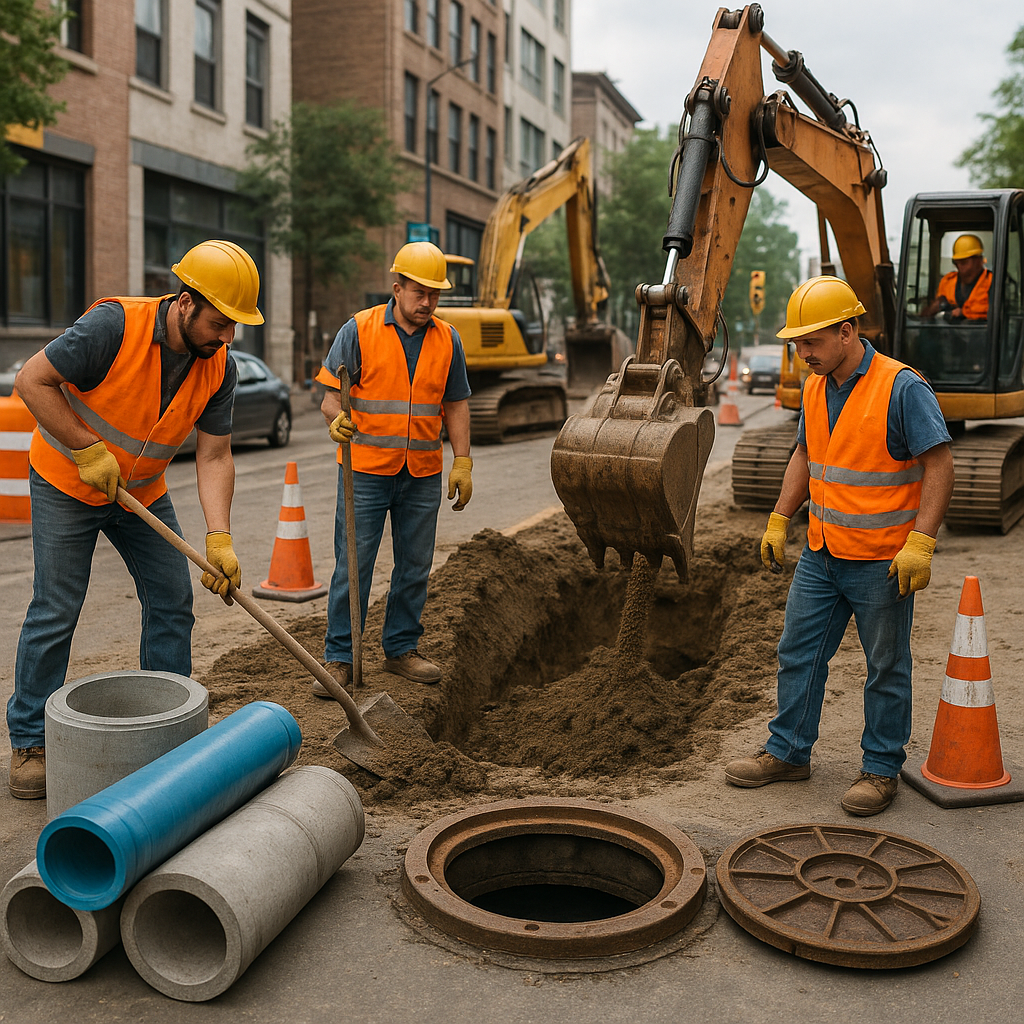Advanced Sewer Line Maintenance: 2024 Procedures
Explore 2024's advanced sewer line maintenance procedures using AI, robotics, and smart systems for improved safety and cost-efficiency.

Advanced Sewer Line Maintenance: 2024 Procedures
Introduction
Sewer line maintenance has evolved significantly in 2024, leveraging cutting-edge technologies such as robotics, AI analytics, and integrated data management systems. This shift not only enhances accuracy and safety but also improves cost-effectiveness, supporting the infrastructure needs of growing urban areas and smart city projects.
New Technologies and Equipment
Robotics and Autonomous Systems
Incorporating robotics into sewer line inspections has revolutionized maintenance procedures:
- Crawler Robots: Equipped with high-definition cameras, these robots conduct detailed inspections remotely, minimizing the need for human entry into confined spaces.
- Autonomous Inspection Robots: These advanced robots can navigate sewer systems independently, providing real-time data back to operators.
AI and Automated Defect Detection
Artificial intelligence is now a cornerstone of sewer line maintenance:
- AI systems analyze video feeds to detect cracks, joint displacements, and root intrusions.
- Real-time analysis significantly improves the accuracy and efficiency of inspections.
3D Mapping and GIS Integration
Advanced robots now offer 3D spatial data that integrates seamlessly with Geographic Information Systems (GIS):
- Facilitates comprehensive sewer network management.
- Supports predictive maintenance strategies.
Cloud-Based Data Storage and Remote Monitoring
Mobile inspection systems now utilize cloud platforms:
- Allows for efficient data analysis and storage.
- Promotes proactive maintenance and informed decision-making.
Smart Plumbing Systems
Sensors in residential plumbing systems are now common:
- Monitor water usage and detect leaks remotely.
- Encourage early detection of issues and water conservation.
Industry Regulations and Standards
Environmental regulations on wastewater management are becoming increasingly stringent:
- Compliance Requirements: Businesses must adopt sophisticated technologies to meet regulatory standards, reducing contamination risks.
- Challenges for Smaller Businesses: Compliance costs and technical training can be burdensome.
Market Trends and Business Opportunities
The sewer inspection market is experiencing significant growth:
- Market Expansion: Expected to grow from USD 500 million in 2024 to USD 800 million by 2033.
- Predictive Maintenance: AI and data analytics reduce emergency repairs and optimize budgets.
- Smart City Projects: Present opportunities for integrating advanced inspection technologies.
Safety Protocols and Best Practices
Safety remains a top priority in sewer line maintenance practices:
- Robotic Inspection Tools: Reduce human exposure to hazardous environments.
- CCTV and Remote Monitoring: Minimize the need for confined space entries.
- Training on New Technologies: Ensures safe and effective operation of equipment.
Recent Case Studies
While specific case studies are not detailed here, municipalities have successfully implemented AI-powered defect detection and autonomous robots:
- Infrastructure Longevity: Extends the life of sewer systems.
- Cost Reduction: Lowers maintenance costs significantly.
Cost and Pricing Information
Advanced technologies, while requiring high initial investments, offer significant long-term savings:
- Investment Barriers: Smaller entities may find initial costs prohibitive.
- Return on Investment: Predictive maintenance and operational efficiency offset initial expenses.
Conclusion
The landscape of sewer line maintenance in 2024 is defined by the integration of robotics, AI, and smart technologies. These advancements not only ensure compliance with stringent regulations but also enhance operational efficiency and safety. By adopting these technologies, sewer inspection businesses can improve system reliability and sustainability.